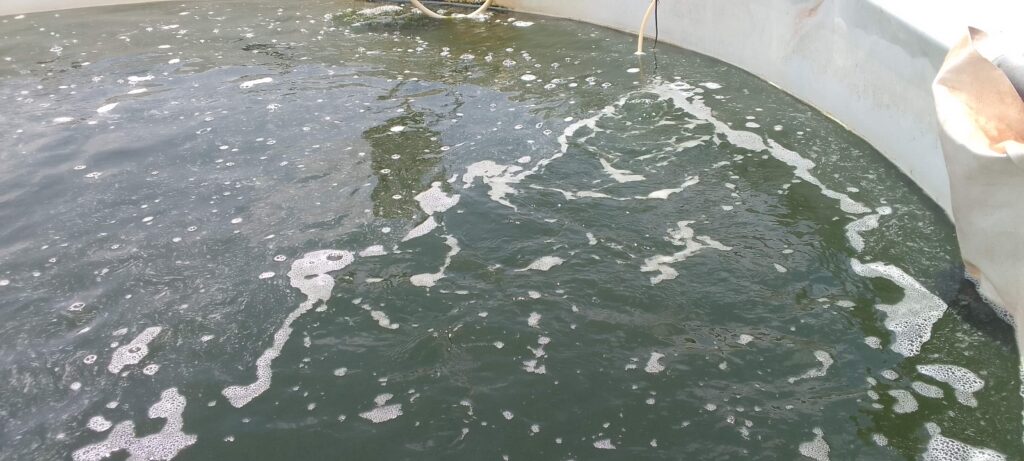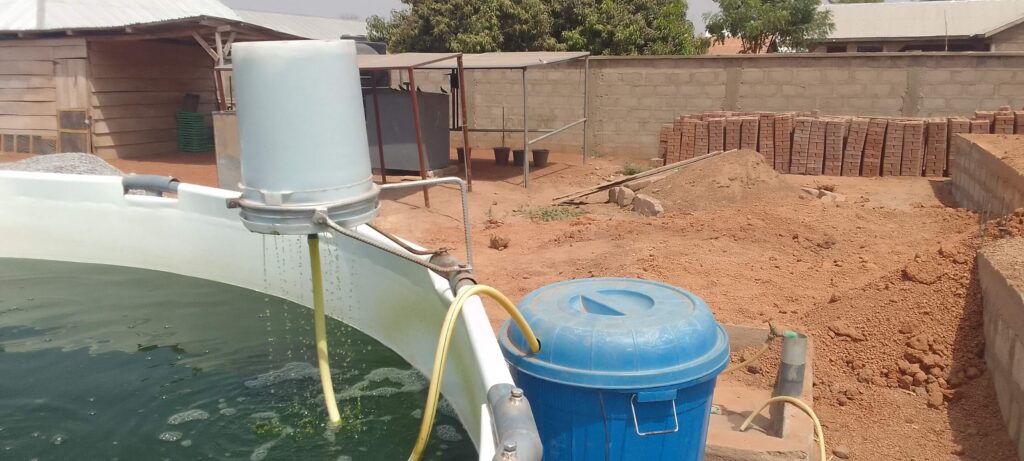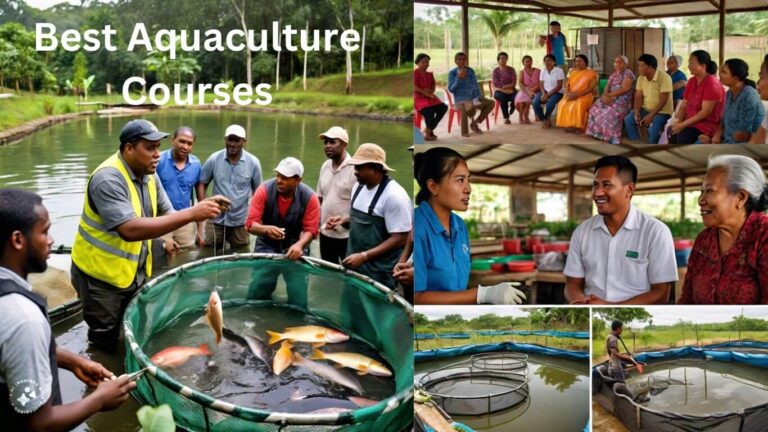Best Pumps for Fish Farming is critical in transforming your aquaculture journey into a profitable venture. Pumps play a vital role in maintaining water quality, ensuring proper aeration, and facilitating efficient water circulation.
In this post, we’ll dive into the best pumps for fish farming, highlighting their uses, advantages, and disadvantages to help you make an informed decision.
Key Areas Where You Use Pumps in Fish Farming
1. Water Circulation
Water circulation is essential to maintain a healthy aquatic environment. Pumps ensure that water moves continuously, preventing stagnation and promoting oxygenation. Proper water circulation helps distribute nutrients evenly and removes waste products, which is crucial for the growth and health of the fish.
When you have a pump circulating the water in your fish pond or tank, you will notice the fish always be around that area. This signifies how your aquatic friends love it. The pump also pushes the insoluble particles under to be collected by the BedFiltation System which then pushes them out through the filtration system which we will discuss more later in this post.
2. Aeration
Aeration pumps increase the oxygen levels in the water, which is vital for the survival and growth of fish. These pumps create bubbles that add oxygen to the water, supporting the metabolic needs of the fish. Adequate oxygenation also helps in preventing the build-up of harmful gases like ammonia and carbon dioxide.
The good news is that, with the right pump, it can perform both the aeration and water circulation I mentioned above.
You will just have to create a hole and penetrate a bobble tube which will always pull the oxygen outside and push it into the pond. You can vividly see the bubble on the surface as shown in the below picture.

3. Filtration
You use Pumps in conjunction with filtration systems to remove waste, debris, and toxins from the water. This helps in maintaining clean and clear water, which is crucial for fish health. Effective filtration ensures that harmful substances are kept at bay, reducing the risk of disease and promoting a healthier environment.
4. Recirculating Aquaculture Systems (RAS)
In RAS, we use pumps to circulate water through various filtration and aeration systems, ensuring a stable and controlled environment for fish farming. This system allows for higher stocking densities and efficient resource use, making it a popular choice for commercial fish farming operations. Check out more about RAS in this post.
The RAS on my farm uses two pumps—one for aeration and the other one for filtration.
I, therefore, recommend the two pumps for you since experience is the best teacher.

There is a pump inside the outside container which pulls out the water
5. Draining and Filling Tanks
We also use Pumps for draining and filling tanks during maintenance, harvesting, or when setting up new tanks. They make the process efficient and less labor-intensive, allowing for quick water changes and easy management of the aquaculture system.
I use the two pumps for my RAS for draining the water in the fish pond again hence there are no separate pumps for that.
6. Pump for Borehole
You need to know that underground water such as boreholes is best for fish farming practices. You need to drill a borehole for your fish farm. After drilling the borehole, you surely need a pump that shall pump the water to your storage tanks. The pump can be an electrical pump or a solar pump.
Types of Pumps for Fish Farming
1. Submersible Pumps
Submersible pumps are placed underwater and are ideal for various fish farming applications. They are best work in water.
All the pumps I mentioned above are submersible pumps. The water circulation, filtration, aeration, and RAS pumps are all submersible pumps.
Advantages
– Efficiency: Submersible pumps are highly efficient as they push water to the surface, utilizing less energy compared to other pumps.
– Quiet Operation: These pumps operate quietly, which is beneficial for fish that are sensitive to noise, ensuring a stress-free environment.
– Space-Saving: You need to place them underwater, submersible pumps do not take up space in the fish tank, allowing for more room for the fish to swim.
Disadvantages
– Maintenance: Regular maintenance is required to prevent clogging from debris and biofilm, which can reduce efficiency.
– Accessibility: Since they are submerged, accessing them for repairs can be challenging, often requiring the tank to be drained or the pump to be removed.

Aeration pump with air tube
2. External Pumps
External pumps are installed outside the water body and are commonly used in larger fish farming operations.
Advantages
– Easy Maintenance: External pumps are easier to access and maintain, allowing for quick troubleshooting and repairs without disturbing the fish.
– High Flow Rates: They can handle high flow rates, making them suitable for large-scale operations that require significant water movement.
– Durability: These pumps are often more durable and can handle continuous operation, reducing downtime and maintenance costs.
Disadvantages
– Noise: They tend to be noisier compared to submersible pumps, which might affect noise-sensitive fish species.
– Space: External pumps require more space for installation, which could be a constraint in smaller or more compact setups.
3. Air Pumps
we use Air pumps primarily for aeration, ensuring that fish have adequate oxygen levels.
Advantages
– Enhanced Oxygenation: They significantly improve oxygen levels in the water, which is essential for the metabolic processes of fish.
– Versatility: Air pumps can be used with various air stones and diffusers to create desired aeration patterns, catering to different species and tank sizes.
– Cost-Effective: Generally, air pumps are less expensive compared to water pumps and have lower operational costs.
Disadvantages
– Limited Use: Air pumps are not suitable for tasks other than aeration, making them a specialized component rather than a multi-purpose tool.
– Noise: Some air pumps can be noisy, which might disturb sensitive fish species and could be a concern in indoor or residential setups.
4. Diaphragm Pumps
Diaphragm pumps are versatile and can be used for both water circulation and aeration.
Advantages
– Versatility: They can handle a variety of tasks, from water circulation to aeration, making them a flexible choice for different fish farming needs.
– Durability: Diaphragm pumps are durable and can handle continuous use, ensuring reliable performance over time.
– Self-Priming: These pumps are self-priming, making them easy to start and operate, reducing the risk of dry runs and associated damage.
Disadvantages
– Cost: They can be more expensive than other types of pumps, requiring a higher initial investment.
– Maintenance: you need to regularly maintain to keep them functioning properly, including checking and replacing diaphragms and valves.
Choosing the Best Pumps for Your Fish Farming
Considerations for Selecting a Pump
1. Purpose: Identify the primary purpose of the pump—whether it’s for water circulation, aeration, or filtration. This will help narrow down the options and ensure you choose a pump suited to your specific needs.
2. Flow Rate: Consider the required flow rate to ensure that the pump can handle the volume of water in your fish farming setup. A pump with an inadequate flow rate can lead to poor water quality and stress for the fish.
3. Energy Efficiency: Look for energy-efficient pumps to reduce operational costs. Energy-efficient pumps not only save money but also contribute to a more sustainable operation.
4. Noise Levels: Always choose a pump with acceptable noise levels, especially if noise-sensitive species are being farmed. Quiet pumps help maintain a stress-free environment for the fish.
5. Maintenance Requirements: Consider the ease of maintenance and availability of replacement parts. Pumps that are easy to maintain can save time and reduce downtime.

Always open and clean pumps as part of maintenance.
Recommended Pumps for Fish Farming
1. Aquascape AquaSurge Pro Pump
– Type: Submersible Pump
– Flow Rate: Up to 8000 GPH (gallons per hour)
– Advantages: Energy-efficient, quiet operation, easy to maintain. It is designed for continuous use and has a protective casing to prevent clogging from debris.
2. Tetra Pond Debris-Handling Pump
– Type: Submersible Pump
– Flow Rate: Up to 3,000 GPH
– Advantages: Handles debris well, is durable, and ideal for pond applications. It features a clog-free design and can handle solid debris up to 1/4 inch, making it perfect for outdoor setups.
3. EcoPlus Air Pump
– Type: Air Pump
– Flow Rate: Up to 3566 GPH
– Advantages: Cost-effective, excellent for aeration, multiple outlet options. It is ideal for providing oxygen to multiple tanks simultaneously, making it a versatile choice for various setups.
4. Blue Diamond ET 80 Septic or Pond Air Pump
– Type: Diaphragm Pump
– Flow Rate: 75 liters per minute
– Advantages: Durable, versatile, low noise. It is designed for continuous use and provides reliable aeration, ensuring a stable oxygen supply for your fish.
Conclusion
Selecting the best pumps for your fish farming is a crucial decision that impacts the health and growth of your fish.
By understanding the different types of pumps and their specific applications, you can ensure a thriving fish farming operation. Consider factors like purpose, flow rate, energy efficiency, noise levels, and maintenance requirements when choosing the right pump.
With the right pump in place, you’ll create a healthy and efficient environment for your fish, leading to successful fish farming.
Whether you’re setting up a new system or upgrading an existing one, investing in the best pumps for your fish farming will pay off in the long run, ensuring a sustainable and productive operation.





